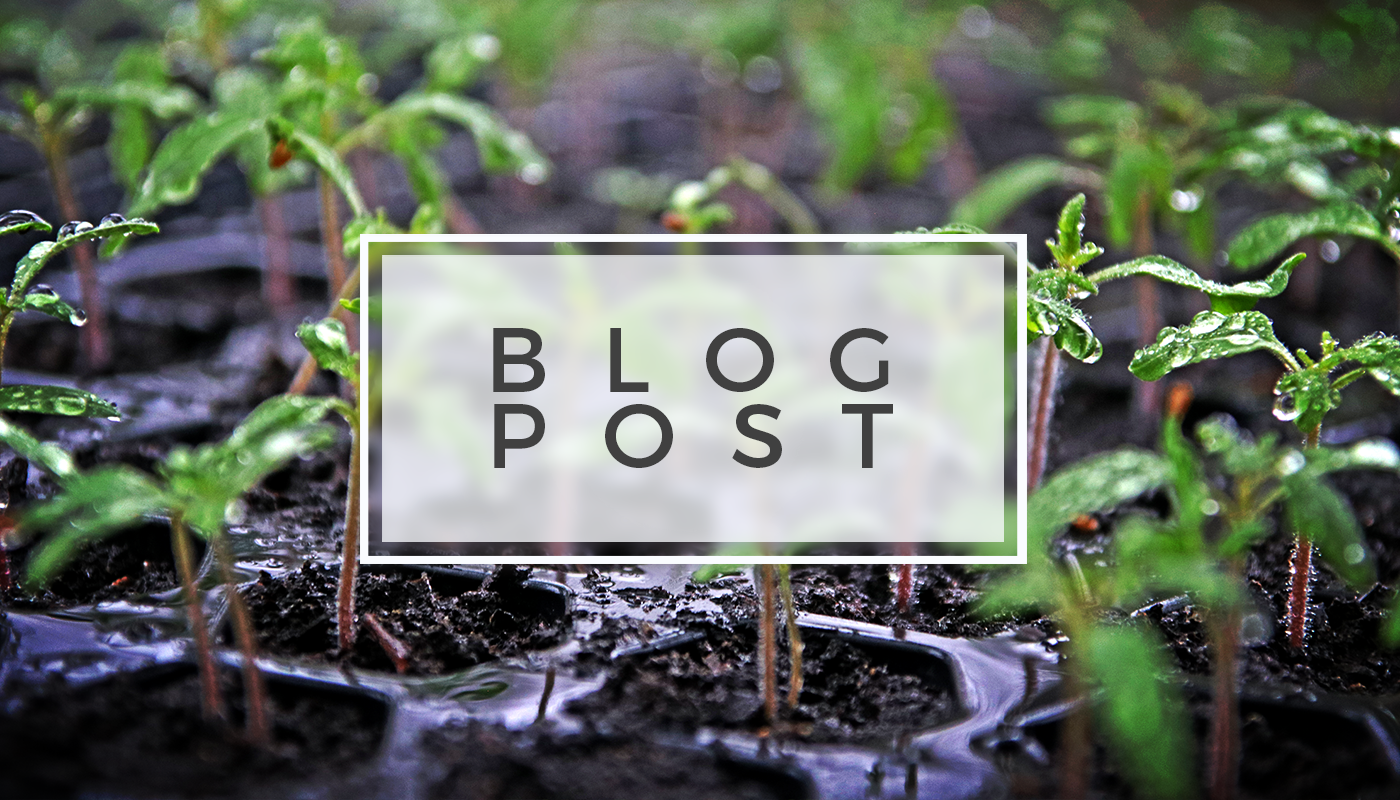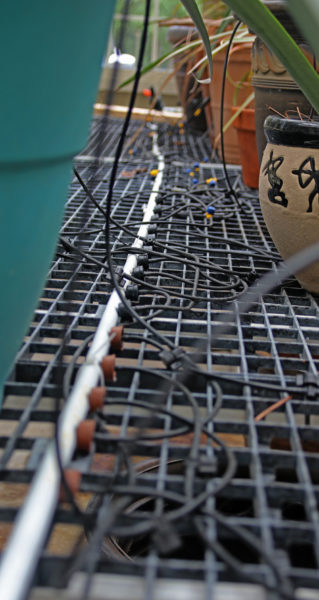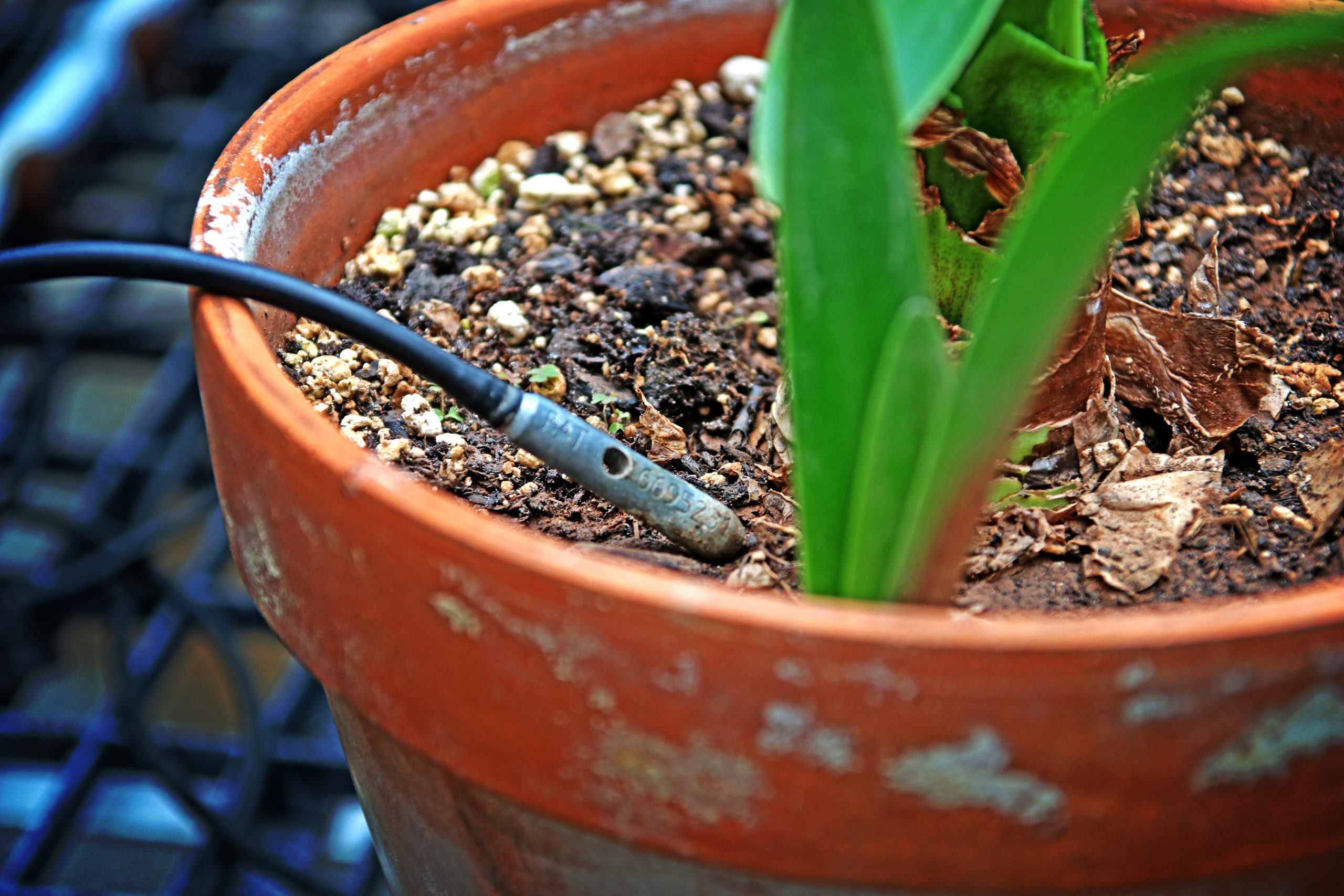

Greenhouse Drip Systems
There are two primary methods of inline irrigation in a greenhouse – misting and drip systems. The two can work in tandem or exclusive from each other. This article will focus on the operation and setup of a drip irrigation system.
Benefits
A drip irrigation system is designed to deliver small amounts of water over an extended period of time. Unlike a misting system, which sprays water over the entire plant in greater quantities and for shorter bursts, a drip system concentrates its irrigation delivery to the roots of the plant. This gradual hydration technique is ideal for delicate seedlings that may get damaged by the force of the spray from a misting system. This method also allows for even water distribution to all plants using the same components. Drip systems are not limited to seedlings. Some larger plant species thrive from the slow saturation method, and there are a variety of delivery systems that can accommodate pots of up to 16” in diameter. A hybrid misting and drip system can be setup to deliver alternating or simultaneous irrigation, zoned irrigation on separate benches and/or service hanging baskets. Both systems can be tied to an environmental control system for hands-free operation.
 Setup
Setup
For all greenhouses, a water supply and drainage is required. The main line of the system should consist of either 1” or 3/4” PVC or polyethylene tubing. Polyethylene tubing is compatible with twist-on fittings that allow for quick and easy installation and is the ideal material for this type of setup, as it self-seals around each insertion point. At the source of the water, an inline filter should be installed next to a manual shut-off valve. Drip systems typically deliver water at 1 – 4 gph. If the main line delivers water pressure greater than 50 psi, a pressure regulator should be installed to bring the pressure between 15 – 50 psi. For multiple benches or a multi-zone system, it is at this point in the line where a series of tee fittings should be installed. For each branch, a manual shut-off valve should be installed to maintain maximum control of water delivery. For an automated system, it is at this point where solenoids for each leg should be installed. Flexible hose, such as garden hose, should be used for rolling benches so the benches can move freely without disrupting irrigation.
Once the system reaches the bench, the tubing can be reduced to either 16mm or ¾” polyethylene tubing. This will serve as the main line for the length of the bench. An end cap, or shut-off valve, should be installed at the end of the line. Using a puncture tool, holes can be placed anywhere along the length of the main line. ¼” tubing with barbed pressure compensators is inserted into each hole and fed to each pot. Drip systems can utilize dribble rings or weighted dribble tubes. Dribble rings come in a variety of diameters and are ideal for equal water distribution in larger pots. Weighted dribble tubes concentrate irrigation to one location and work well with seedlings and hanging baskets. For optimal control, microvalves can be installed in each feeder tube.
An environmental control system can be incorporated for a completely automated system. The considerations involved with this type of automation is covered in another blog post. To get a broader scope of greenhouse irrigation, read Solar Innovations’ Greenhouse Irrigation Overview blog.
For more information on greenhouses, greenhouse accessories, or any other Solar Innovations® products, please contact Solar Innovations® directly at [email protected] or call 800 618 0669.


